Long-Distance PWC Touring/Riding
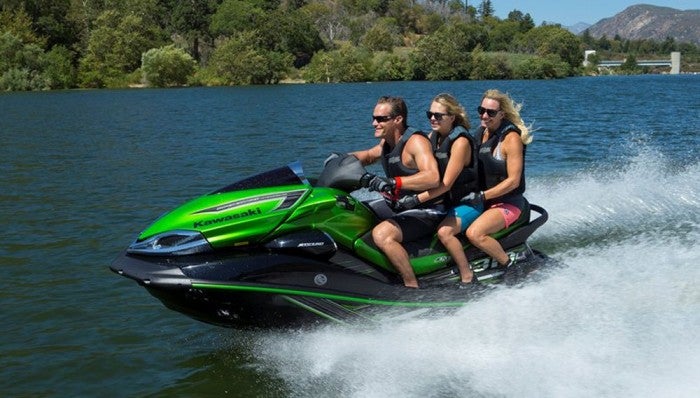
In for the long haul? Check out these items every touring rider should have aboard.
Literally every PWC manufacturer now makes a “touring”-oriented model for good reason. People are traveling and exploring farther than ever on their PWC.
Along the way, those bolstered seats and cruise control options come in handy. So does massive storage capacity and extended fuel range.
Those truly in it for the long haul, however, would be wise to add a few additional accessories to their arsenal before leaving shore.
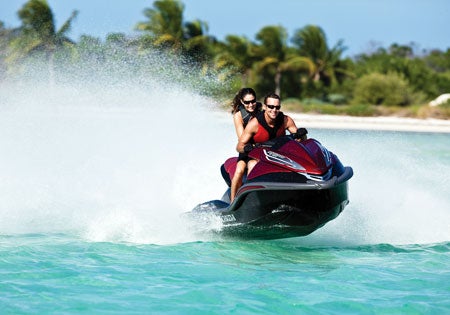 Honda’s AquaTrax F-15X GPScape comes quipped with a GPS system built in.
Honda’s AquaTrax F-15X GPScape comes quipped with a GPS system built in. The one little item that has made long-distance cruising much more realistic should also be the number-one item on your accessories list — a handheld, waterproof GPS. Global Positioning System receivers show you where you are in the world, trace your route so that you can find your way home, and allow you to plan out a course to new destinations that virtually guarantee you’ll find your way. We still love the good old-fashioned nautical chart, but a GPS is mandatory.
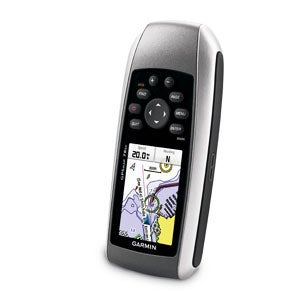 Besides being waterproof, a good GPS system should have a screen that is easy to read in sunlight.
Besides being waterproof, a good GPS system should have a screen that is easy to read in sunlight.Suggestions? Obviously make sure the unit is waterproof, but also check out the screen. Take it outside in the sunlight and see how easy it is to read. It’s also a good idea to choose a unit that can load more detailed charts of the areas where you intend to be cruising. Sure, the basic functions are better than nothing, but once you’ve used a unit with more detailed maps and charts, you’ll find it hard to go back to the basics.
While you’re shopping for electronics, add a handheld VHF. VHF can be used to monitor weather alerts, communicate with other members of your party, or hail the Coast Guard or other vessels in the event of an emergency. Keep in mind VHF units have a limited range, defined both by their antenna height and power. That means members of a group may be able to easily speak with each other while traveling offshore, but should you get too far from land, your group may not be able to reach anyone on the mainland.
Add a cell phone to the mix as well, but keep in mind it will only really be of value in close to shore, in areas with decent coverage.
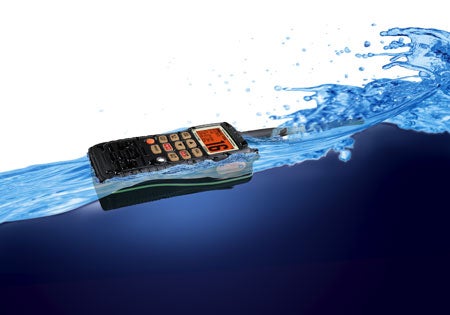 Standard Horizon offers the HX851, a waterproof, floating VHF with a built-in GPS.
Standard Horizon offers the HX851, a waterproof, floating VHF with a built-in GPS.If you’re serious about offshore cruising, you may also wish to consider some of the new satellite messengers, like SPOT (http://www.findmespot.com/). SPOT offers one-way communication in a convenient, easily carried package. In essence, it tracks your wanderings via satellite, and can pinpoint them on the SPOT website using Google Earth. A rider can send messages to family, friends, or emergency responders via simple buttons on the unit’s lower edge. SPOT isn’t intended to take the place of an Emergency Position Indicating Radio Beacon (EPIRB), the tool of choice for hardcore offshore cruisers that’s sole purpose is to give a location in an emergency. It may, however, be more useful for the typical PWC cruising enthusiast.
Of course, when it comes to safety, going old school is a great idea as well. A flare gun, handheld flares, smoke signals, signal flag and mirror, and horn or whistle is always a great idea to have aboard when venturing far from home. Manufacturers, like Orion, package them into convenient watertight canisters that fit neatly in storage areas.
A lot to think about? Not really. Just a few items to make sure you have fun on that next adventure…and return safely to shore ready to tell the tale.
Get PersonalWatercraft.com in your Inbox!
Like PersonalWatercraft.com on Facebook
Comments
Most Popular

2025 Yamaha JetBlaster PRO 2-Up Review

2024 Kawasaki Jet Ski STX 160X Review

Remembering the Sea-Doo XP

Whatever Happened to the Wetbike?

2025 Yamaha JetBlaster Review





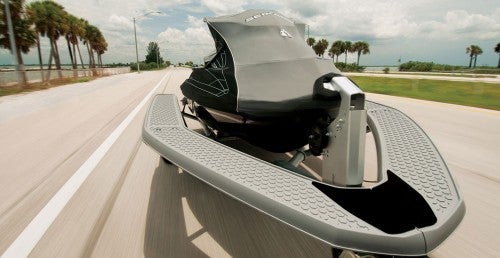







 Your Privacy Choices
Your Privacy Choices